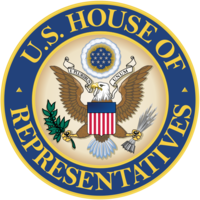With Barber Victory Nearly 1 in 4 House Democrats Elected Via Special Election
Almost one-quarter of the Democratic caucus was first elected to the U.S. House via special election – more than double that of the GOP

For Barber is not simply 1 of 435.
He is 1 of 68.
A Smart Politics profile of the 112th Congress finds that with Barber’s election in Arizona’s 8th CD, nearly one-quarter of the Democratic U.S. House caucus and one-sixth of all members were first elected into the House of Representatives via special election.
Barber won his special election Tuesday by a 7-point margin over Giffords’ 2010 opponent, Republican Jesse Kelly, 52 percent to 45 percent.
Green Party candidate Charlie Manolakis received 2 percent of the vote.
Barber now becomes the 43rd Democrat in the party’s 191-member caucus to enter the House through a special election, or 23 percent of its membership.
By contrast, that is more than twice the rate of Republican members.
Only 25 GOPers won their seat in a special election out of its 242-member caucus, or 10 percent.
Overall, 68 of the 433 members now serving in the House were first elected through a special election, or 16 percent. (Two formerly Democratic-held vacancies remain in NJ-10 and WA-01).
Current U.S. Representatives Elected via Special Election
|
Party
|
Special
|
Total
|
% Special
|
|
Democrat
|
43
|
191
|
22.5
|
|
Republican
|
25*
|
242
|
10.3
|
|
Total
|
68
|
433
|
15.7
|
* Includes Ron Paul who was elected to the U.S. House via special election in the first of his three stints in Congress. Table compiled by Smart Politics.
Many well-known U.S. Representatives currently serving in the House were first elected via special elections including:
· Democratic Minority Leader and former Speaker Nancy Pelosi (CA-08, June 1987)
· Former Democratic Majority Leader Steny Hoyer (MD-05, May 1981)
· Former three-time presidential candidate Ron Paul (TX-14, April 1976)
· Joe “You lie!” Wilson (SC-02, December 2001)
Special elections, of course, arise for a myriad of reasons.
In the case of Gabrielle Giffords, she stepped down in January to focus on her recovery from a near-fatal gunshot wound suffered early last year.
In recent years, specials have occurred due to scandals (David Wu in OR-01, Anthony Weiner in NY-09, Christopher Lee in NY-26, Eric Massa in NY-29), appointments to the U.S. Senate (Dean Heller in NV-02, Kirsten Gillibrand in NY-20), resignations to run for governor (Nathan Deal in GA-09, Neil Abercrombie in HI-01), resignations to leave for a non-governmental post (Jane Harman in CA-36), and death (Donald Payne in NJ-10, John Murtha in PA-12).
But many of the representatives who replace their predecessors due to these unconventional circumstances often make a career out of it.
In fact, Democrat John Dingell (MI-15), the all-time longest serving member of the House, came to Congress in a special election after the death of his father – John, Sr. – in 1955.
In addition to Dingell, other long-serving special election graduates include Alaska’s Republican at-large representative Don Young (39+ years), Wisconsin Republican Tom Petri (WI-06, 33+ years), Steny Hoyer (MD-05, 31+ years), and Gary Ackerman (NY-05, 29+ years).
Nearly one-third of current representatives to enter the House via special election represent districts in California (14) and New York (8) – 22 of 68 members (32 percent) – despite those two states holding just 18 percent of all House seats.
Follow Smart Politics on Twitter.
